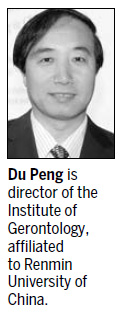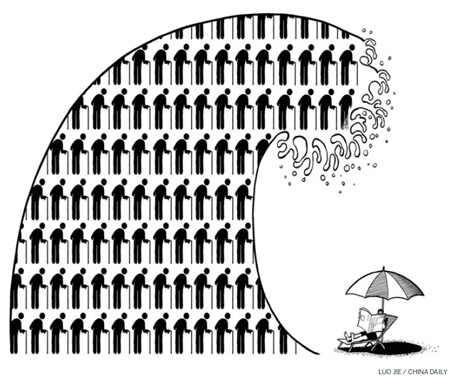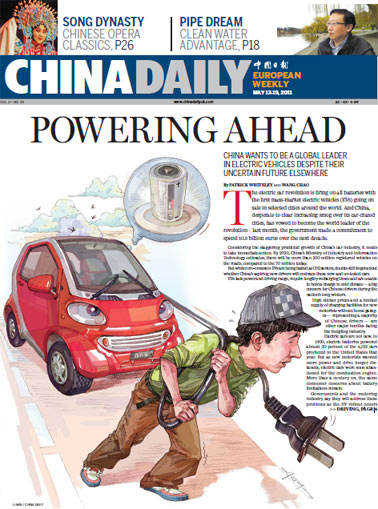Op-Ed Contributors
Aging population a challenge
Updated: 2011-05-19 07:56
By He Bolin (China Daily)


Census data released late last month have sparked a public debate on whether demographic factors would hinder China's economic development. The fear has gained ground because China's population is aging faster than expected, says Du Peng, director of the Institute of Gerontology, affiliated to Renmin University of China.
According to the data, there are 177.6 million people above the age of 60 in China, or 13.26 percent of the total population - up 2.93 percentage points from the previous census a decade ago. It also means that China has more senior citizens than in all the European countries put together. China's aged population and its proportion to the total population both are higher than expected.
From 1990 to 2000, the number of people aged above 60 grew by 33.15 million, or 3.315 million a year. But between 2000 and 2010, the growth rate increased to 4.753 million a year. And another 80 million people are expected to enter their golden age by 2015.
|
||||
This means China's population is now on the fast track of aging, which would cause far-reaching socio-economic consequences, Du says. If this trend continues, which Du says will, the number of senior citizens will reach 200 million in 2013, a year earlier than expected.
China will reach a critical point in 2015, when elderly people are expected to outnumber children (0- to 14-year-olds). And by 2050, the aged population will reach 437 million, or about 30 percent of the population.
These developments mean China has to accelerate its efforts to improve the social security and pension systems. The country now has about 38,060 nursing homes run by various institutions.
But the nearly 2.7 million beds that they have account for just 1.5 percent of the aged population. In contrast, nursing homes in developed countries have enough beds for about 5 to 7 percent of their senior citizens. Even in Brazil, such nursing homes can accommodate 3 percent of the country's aged population.
The number of elderly people in China will reach the peak of 437 million in 2050, far beyond what the existing nursing homes can handle. Civil administrative authorities say the cost of adding another bed to a nursing home for the elders in places like Zhejiang province or Shanghai would be about 160,000 yuan ($24,590) - not including the cost of land.
E-paper

Green works
Wuxi becomes 'test case' for facing country's environmental challenges
Preview of the coming issue
The global rise of Chinese brands
China-EU trade on solid ground
Specials

The song dynasty
There are MORE THAN 300 types of Chinese operas but two POPULAR varieties are major standouts

Cut above the rest
One of the world's oldest surgeons has performed more than 14,000 operations

From the ground up
Architect of Guangzhou Opera House has many projects under way, including 2012 Olympics.



